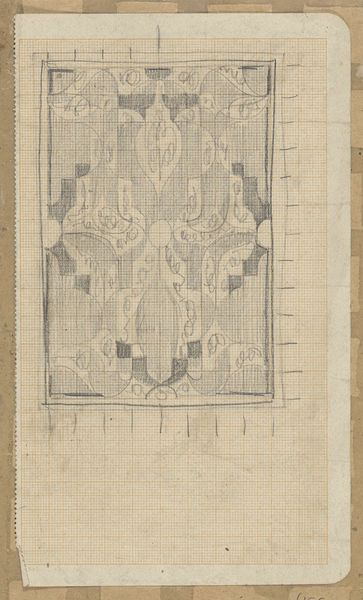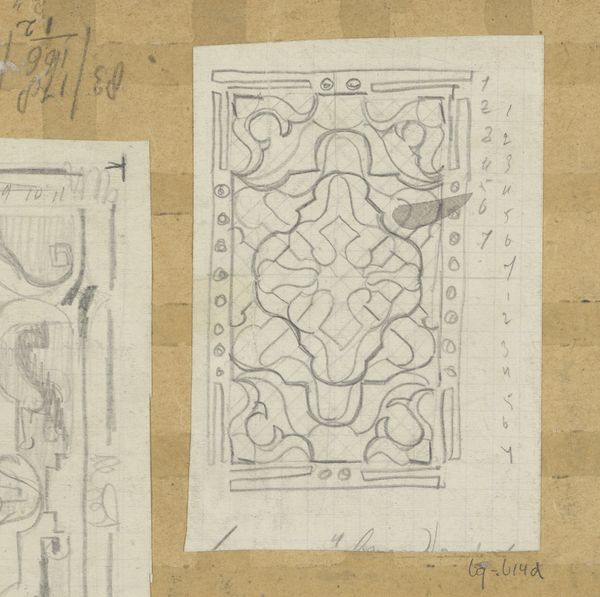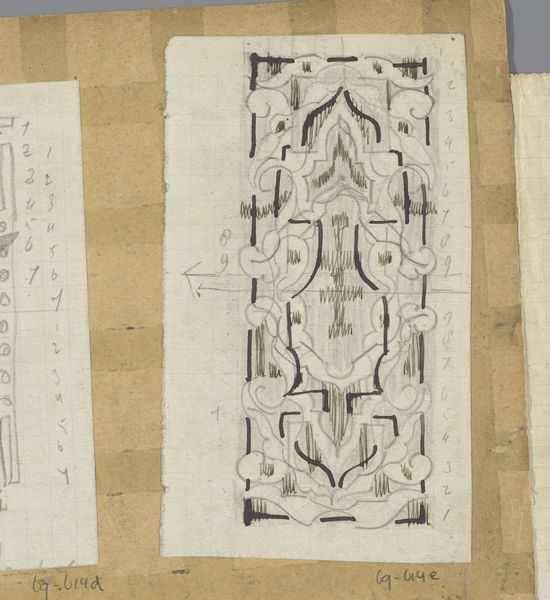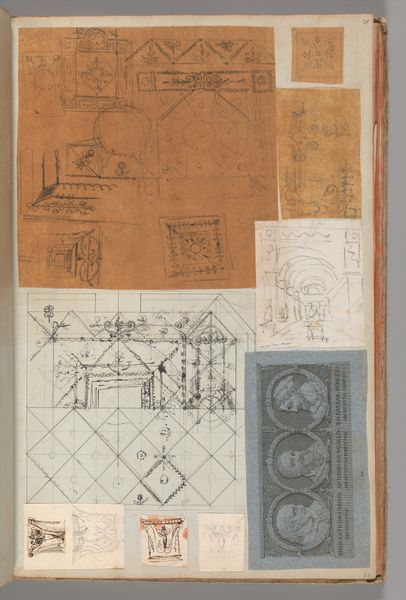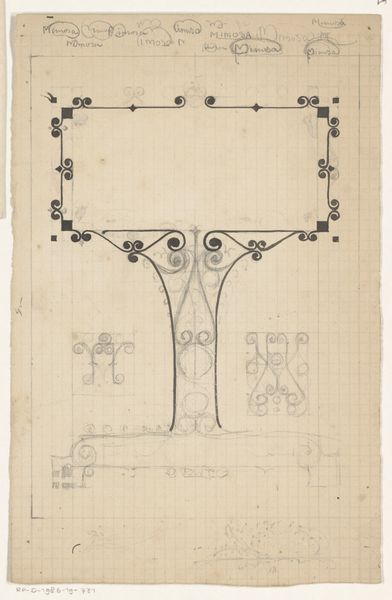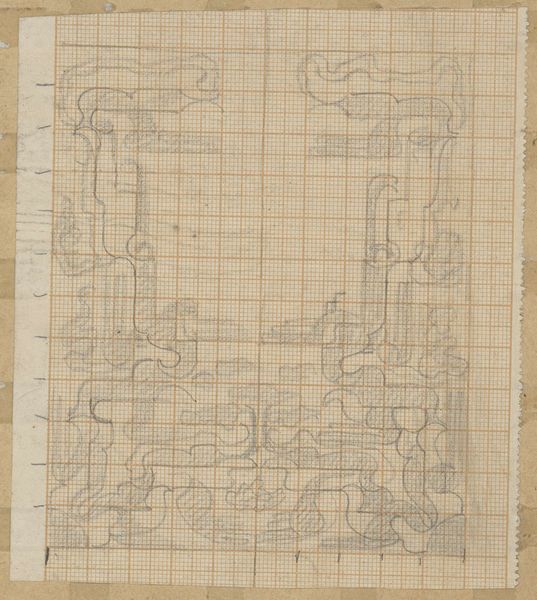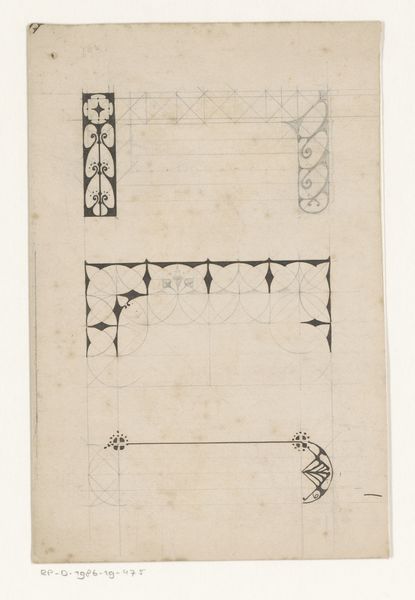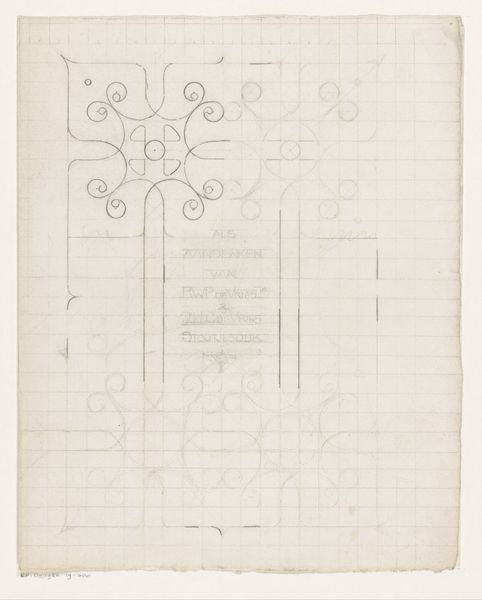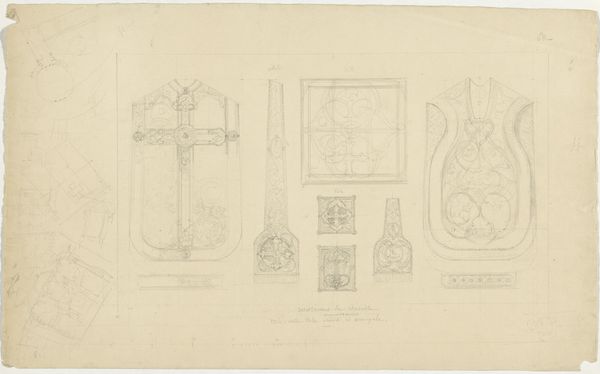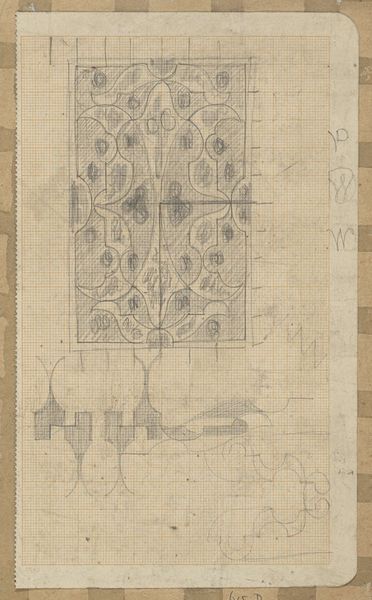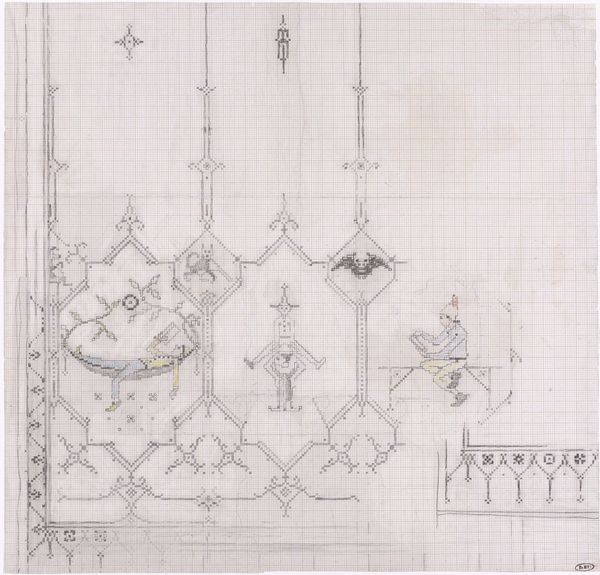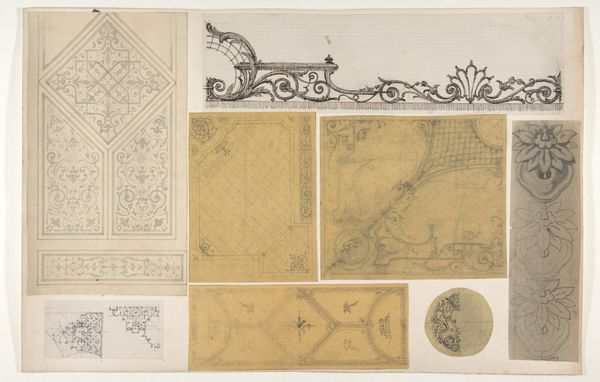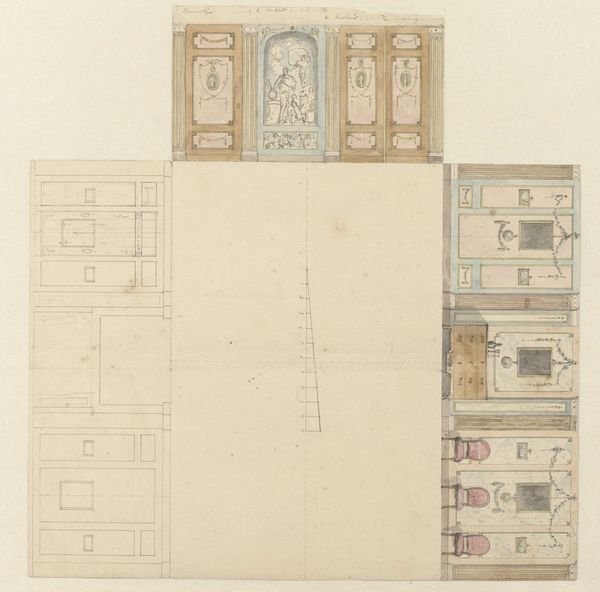
drawing
#
drawing
#
comic strip sketch
#
aged paper
#
toned paper
#
art-nouveau
#
sketch book
#
personal sketchbook
#
sketchwork
#
geometric
#
detailed observational sketch
#
sketchbook drawing
#
storyboard and sketchbook work
#
decorative-art
#
sketchbook art
Dimensions: height 193 mm, width 172 mm
Copyright: Rijks Museum: Open Domain
Curator: Here we have "Drie decoratieve ontwerpen," or "Three Decorative Designs," a drawing by Carel Adolph Lion Cachet, dating roughly from 1874 to 1945. It’s currently held in the Rijksmuseum. Editor: My first thought is "fragmentary." The aged paper gives it an aura of rediscovery, and the graphite lines create a sense of ephemeral possibility. They're clearly design concepts. Curator: Absolutely. The linearity and geometric construction emphasize the Art Nouveau and Decorative Arts elements at play here. The artist emphasizes balanced forms across the three panels. Do you observe the strategic positioning of lines, dots, and empty spaces within each frame? Editor: I do. It also appears to me like the artist is sketching out potential building or architectural motifs. I find myself thinking about the role of public spaces during the artist's life, places intended to promote harmony and communal experiences. The design process itself has the potential to be a potent space for change. Curator: An interesting point. These drawings could be sketches of design patterns and shapes, pure creative exploration, not specifically related to the politics of the time, per se. The composition offers a structured aesthetic experience through the visual repetition of geometric design patterns. Editor: I see that, but even pure shapes communicate meaning through design choices, which reflect their moment and culture. Considering his colonial ties and decorative work at the Delhi Durbar in 1903, could these possibly represent cultural fusion through geometric abstractions, possibly obscuring uncomfortable socio-political truths? Curator: It's plausible. Alternatively, these intricate decorative motifs could stand independently of that history and context. By analyzing this work using the formal properties evident, one can recognize the pure aesthetic qualities independent of exterior intention or experience. Editor: Fair, but art rarely exists in a vacuum. The work asks us to consider questions around production and design that reverberate into how it exists today. It serves as a lens. Curator: Indeed. The enduring interest in Cachet’s work may, in part, result from this constant push and pull in how the motifs both stand on their own and within this context you've established. Editor: Perhaps so. Art has that knack for challenging the eye and, in doing so, revealing hidden connections between form and experience.
Comments
No comments
Be the first to comment and join the conversation on the ultimate creative platform.
